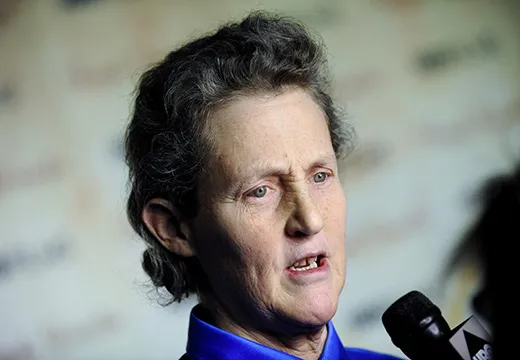Temple Grandin on a New Approach for Thinking About Thinking
The famed author and advocate for people with autism looks at the differences in how the human mind operates
/https://tf-cmsv2-smithsonianmag-media.s3.amazonaws.com/filer/Temple-Grandin-631.jpg)
When I was young, I assumed that everybody thought in photo-realistic pictures the way I do. When I think about a church steeple, I see many specific steeples in my imagination. They pop into my mind like a series of slides projected on a screen. My concept of a church steeple is based on putting many examples in a file in my brain labeled “church steeples.” It was a mind-expanding experience for me to learn that other people process information in a different way.
As a person with autism, I have the typical profile of an area of great skill and an area of difficulty. Algebra was impossible because there was nothing to visualize, but I excelled at art. Thinking in pictures has been a great asset in my business of designing livestock facilities for cattle. I can visualize projects in my mind before they are built. I observed that cattle often refused to walk over shadows, and they were spooked by sparkling reflections or shiny metal on wet floors. These things were obvious to me, but many previous designers had failed to see them.
Autism is a developmental disorder that ranges from very severe, in which a child remains nonverbal, to mild, including in highly intelligent people with specialized talents. After I wrote my book Thinking in Pictures, I talked to many people and I learned that there are three types of thinking styles that are common in people with autism. In addition to visual thinking, there is pattern thinking and word thinking. Each of the three types of thinking is a continuum. People without autism may have some specialization, but people with autism are often on the extreme end of a continuum.
A pattern-thinking child typically has great ability in math and difficulty reading. Children who think in mathematical patterns have given me fabulous, complex origami creations. When I asked an astrophysicist with a mathematical mind about church steeples, he saw abstract patterns of motion, people making steeples with their hands. There were no generalized or realistic pictures. (To learn more about the pattern-thinking mind, read Daniel Tammet’s book Born on a Blue Day.)
The word thinker may be poor at drawing but have a huge memory for facts such as sports statistics or film stars.
Different kinds of minds should work together. When they do, they complement each other’s skills. For example, I leave it to the pattern thinkers to design a nuclear power plant, but I think a photo-realistic visual thinker would have spotted a fatal flaw in the safety systems of the Japanese Fukushima nuclear reactors. The emergency generators for the cooling pumps were in low areas. When the tsunami hit, the generators were submerged and the reactors melted down. A visual thinker would have been able to imagine water cascading into the basement.
I used to think that stupidity was the cause of people not being able to see things that were obvious to me. Today I realize it was not stupidity; it is just a different way of thinking.
